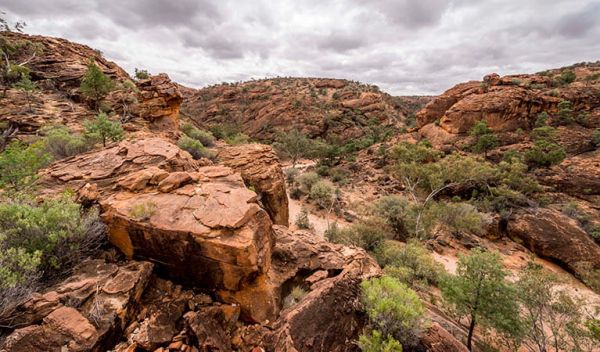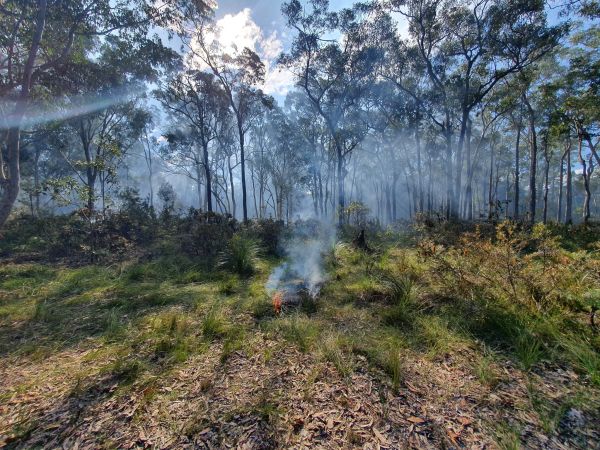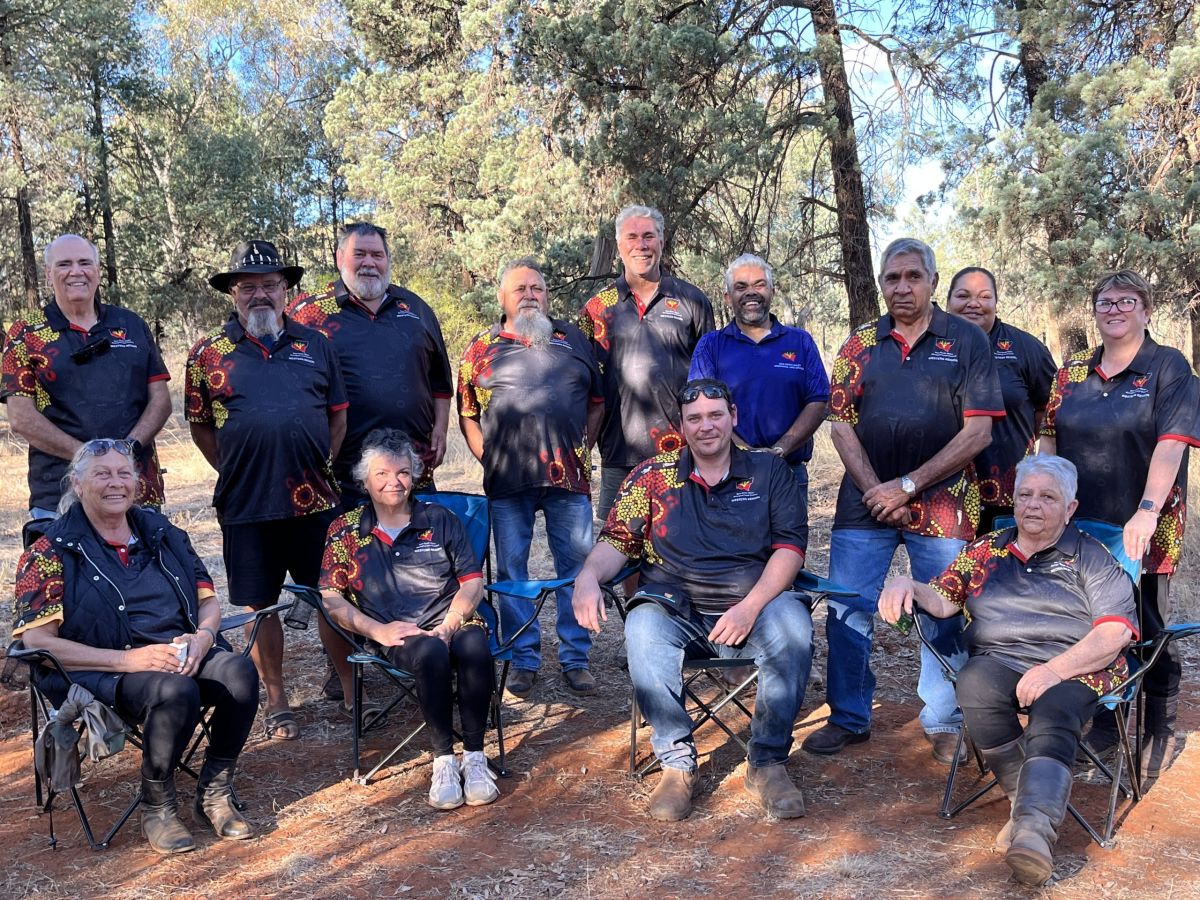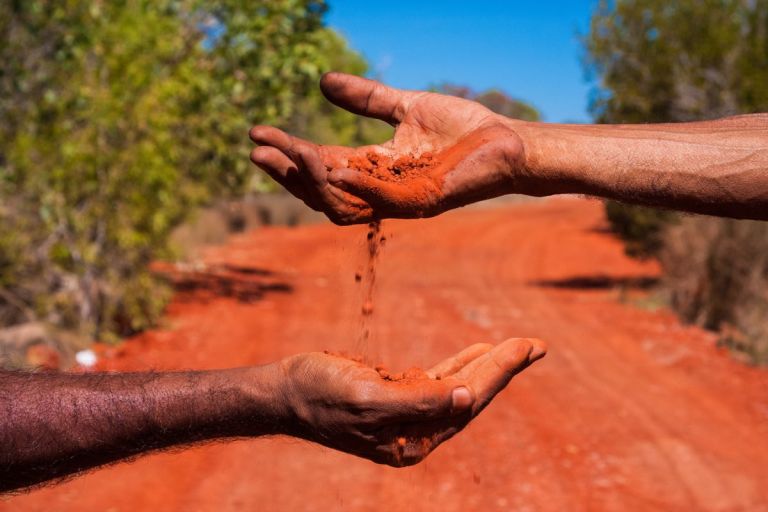1978 NSW Legislative Assembly Select Committee upon Aborigines was appointed under Chairmanship of Maurice Keane MP. The committee’s approach and findings represented a departure from previous government ‘assimilation’ policies.
1980 The first report of the Select Committee, now known as the Keane Report, was released in August 1980. The Committee emphasised the granting of land rights was of paramount importance to Aboriginal people in NSW and should be regarded as ‘an act of elementary justice’ to recompense for past actions detrimental to Aboriginal people.
1982 A Green Paper proposing a framework to provide Aboriginal Land Rights in New South Wales was released by Aboriginal Affairs in December 1982. The paper outlined a three tiered governance structure for Aboriginal Land Councils able to claim Crown land and to operate as democratically elected community organisations.
1983 NSW Aboriginal Land Rights Bill introduced to the NSW Parliament:
- The second reading speech was delivered by the Minister for Aboriginal Affairs, the Hon. Frank Walker MP on 24 March 1983.
- The Bill was assented by the Governor on 4 May 1983.
- The Aboriginal Land Rights Act, 1983 (ALRA) commenced operation on 10 June 1983.
1986 Amendments to compel the NSW Aboriginal Land Council to pay outstanding unpaid municipal rates and charges accrued by Local Aboriginal Land Councils.
1990 Amendments to enable the lands granted to and owned by Aboriginal Land Councils to be sold or otherwise disposed of. Previously land was inalienable and could not be sold, which mirrored provisions under the Northern Territory Aboriginal Land Rights Act 1976 (C’wlth). The freehold title of land granted under the ALRA is unique in Australia, allowing for greater economic opportunities from land holdings, and freedom for Aboriginal people to determine their community aspirations.
1991 The first popular election of the NSW Aboriginal Land Council was held in November 1991, conducted by the NSW Electoral Commission. Previously the Council was formed by composition of delegates determined by the now defunct Regional Aboriginal Land Councils.
1997 Amendments to provide for the Aboriginal Ownership and joint management of National Parks in NSW. A schedule of priority national parks were included, these being:
- Biamanga National Park (South Coast near Narooma).
- Gulaga National Park (south coast near Narooma).
- Jervis Bay National Park (south Coast).
- Mungo National Park (far west near Mildura).
- Mutawintji National Park, Mutawintji Historic Site and Mutawintji Nature Reserve (far west near Broken Hill).
- Mount Grenfell Historic Site (West near Cobar).
- Bulagaranda (Mount Yarrowyck) Nature Reserve (Northern Tablelands near Armidale).

Creator: John Spencer
2003 The Minister for Aboriginal Affairs, the Hon. Andrew Refshauge MP appointed an investigator to investigate the affairs of the NSW Aboriginal Land Council following a number of qualified audits and concerns over poor financial and corporate management. Following consideration of the Investigator’s report the Minister removed the Council and appointed an administrator who remained in office until 2007.
2004 The Minister for Aboriginal Affairs, the Hon. Andrew Refshauge, acted on the ICAC recommendations to clarify Land Council staff and officials’ roles by appointing a taskforce to extensively review the land dealings processes, and governance structures of Aboriginal Land Councils.
2006 Following the review of the Act in 2004/2005 amendments were made to improve the structure and governance of land councils. The main change saw Aboriginal Land Councils adopt a corporate governance structure, with governing boards and chief executive officers with clear separation of powers, and stronger community, land and business planning. The amendments commenced operation from 1 July 2007.
2007 On 19 May 2007 the term of the administrator appointed to the NSW Aboriginal Land Council ended, coinciding with the return of an elected Council comprised of nine councillors.
2009 Amendments to improve and create certainty in the land dealing provisions of the Act, including defined approval and oversight powers for the NSW Aboriginal Land Council. The amendments commenced operation on 31 March 2010.
2010 The Minister for Aboriginal Affairs, the Hon. Paul Lynch MP dissolved two Local Aboriginal Land Councils. The orders to dissolve the councils are the only instances where Local Aboriginal Land Council have been dissolved in the administration of the Act. The dissolved councils were:
The Quambone Local Aboriginal Land Council, dissolved on 29 January 2010 for not functioning.
The Koompahatoo Local Aboriginal Land Council, dissolved on 12 March 2010 because an administrator had been appointed for an unacceptable length of time and the Land Council’s asset base had been depleted following the settlement of litigation with land developers.
Note: The same area that comprised the Koompahtoo Local Aboriginal Land Council was constituted as Biraban Local Aboriginal Land Council on 18 May 2012 following a formal petition of Aboriginal people for a new Council to be created.

Biraban Local Aboriginal Land Council
2012 The first statutorily required review of the Act was announced by the Minister for Aboriginal Affairs, the Hon. Victor Dominello MP.
2013 A first tranche of amendments were made based on the outcomes of the Minister’s statutory review conducted in 2012. The amendments targeted administrative matters to enhance the day-to-day operation of Aboriginal Land Councils and commenced operation on 18 September 2013 and 1 January 2014.
2014 A second tranche of amendments were made based on the outcomes of the Minister’s statutory review conducted over 2013-2014. Amendments included a new way for Local Aboriginal Land Councils and the Minister administering Crown lands to negotiate voluntary Aboriginal Land Agreements. Other amendments clarified the way Aboriginal Land Councils can establish and undertake business enterprises, including the creation of related entities. The amendments commenced operation on 1 July 2015.
2016 Amendments to provide the NSW Aboriginal Land Council (NSWALC) with the power to issue ‘Performance Improvement Orders’ to Local Aboriginal Land Councils to improve compliance and build their capacity and, if required, to appoint specialist advisors to assist the Councils to implement the Orders.
2017 A statutory review of the Act was conducted by the Minister for Aboriginal Affairs, the Hon. Sarah Mitchell MLC. The review did not recommend any changes to the Act.
2019 The State Environmental Planning Policy (Aboriginal Land) 2019 (SEPP) was made on 6 February 2019 to facilitate rezoning requests and development application approvals for Local Aboriginal Land Councils to assist their land development aspirations. The SEPP sympathetically aligns the NSW planning system with the Aboriginal Land Rights Act, 1983 stimulating improved governance, empowerment, strategic planning and more efficient land use.
2023 In February 2023, the Wangaaypuwan Local Aboriginal Land Council was gazetted, making it the 121st Local Aboriginal Land Council in NSW.

NSW Aboriginal Land Council
